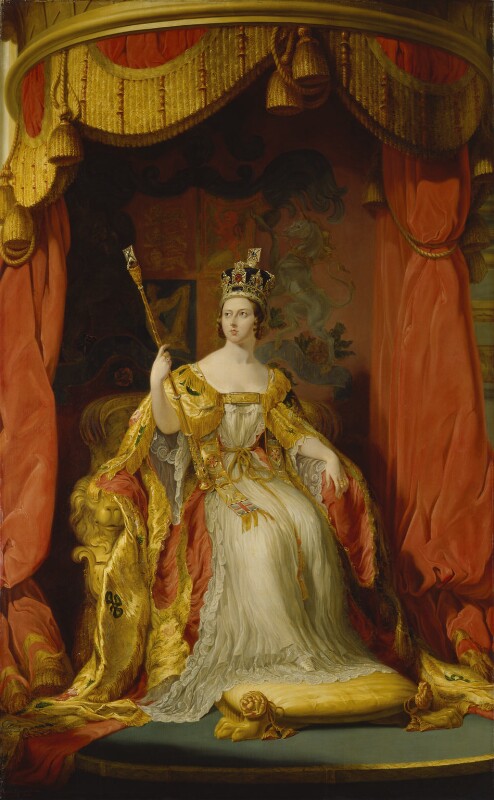Sir George Hayter (1792–1871) succeeded Sir David Wilkie in 1841 as the Queen's Principal Painter in Ordinary, and was one of several artists on whom she bestowed a knighthood. His influence waned as tastes changed. Nevertheless, he still left an important legacy. Barbara Coffey Bryant's appreciation is well deserved:
Hayter was a distinctly cosmopolitan artist of fluency and glamour. Royal and aristocratic patronage fuelled his ambition to paint large-scale modern history paintings based on portraiture and royal ceremonies. These historical works, especially those in the National Portrait Gallery, remain important visual documents of eminent individuals present at public events in the 1820s, 1830s, and 1840s.
Hayter's best known work is probably his portrait of the Queen in her coronation finery. Much of his work was engraved, and indeed he painted it in that expectation. — Jacqueline Banerjee

Works
Bibliography
Bryant, Barbara Coffey. "Hayter, Sir George (1792–1871), painter and engraver." Oxford Dictionary of National Biography. Online edition. Web 15 April 2022.
Gunn, Ann V. “Sir George Hayter, Victorian History Painting, and a Religious Controversy.” Record of the Art Museum, Princeton University 53, no. 1 (1994): 3–32. Available on Jstor. Web. 15 April 2022.
Created 29 July 2020
Last modified 15 April 2022